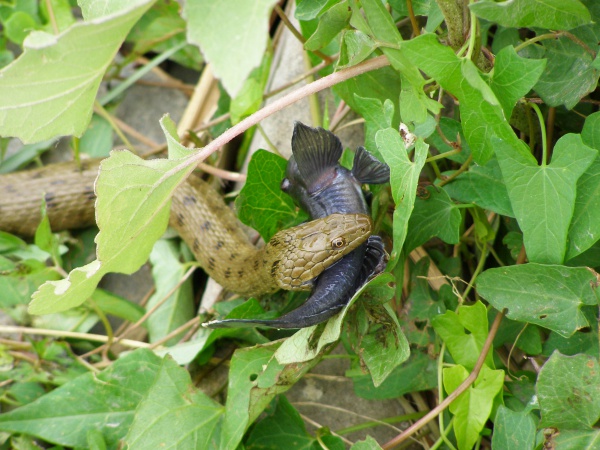Facts About Dice snake
The dice snake, also known as the water snake, is a nonvenomous European snake that belongs to the Colubridae family. Females are typically larger than males, measuring between 1.0 and 1.3 meters in length. Their coloration varies from greyish-green to brownish, adorned with dark spots on their backs. The underside of a dice snake can be brightly colored in yellow or orange with black spots that resemble dice, which is the origin of their name.
Dice snakes are commonly found near rivers and lakes, where their primary diet consists of fish. Occasionally, they will also consume amphibians such as frogs and toads. Although these snakes are nonvenomous, their serum contains antihemorrhagic properties, and they may have a neurotoxin in their oral glands. When threatened, dice snakes defend themselves by releasing a foul-smelling substance and sometimes by playing dead.
The mating season for dice snakes spans from March to May. They lay their eggs in July, with each clutch containing 10 to 30 eggs. The young hatch in early September. Dice snakes hibernate from October to April, typically in dry burrows near water bodies.
Dice snakes are distributed across Europe and Asia, including countries such as Lebanon, Germany, France, Croatia, Italy, Greece, Russia, Turkey, and India, among others. Researchers have shown particular interest in populations in Romania, especially near the ruins of Histria, where parasitic nematodes pose a threat. Conservation efforts and studies on population biology are ongoing to protect these unique coastal populations. For a comprehensive overview of the biology, distribution, and conservation of dice snakes, refer to the work by Mebert (2011).

 Hungary
Hungary